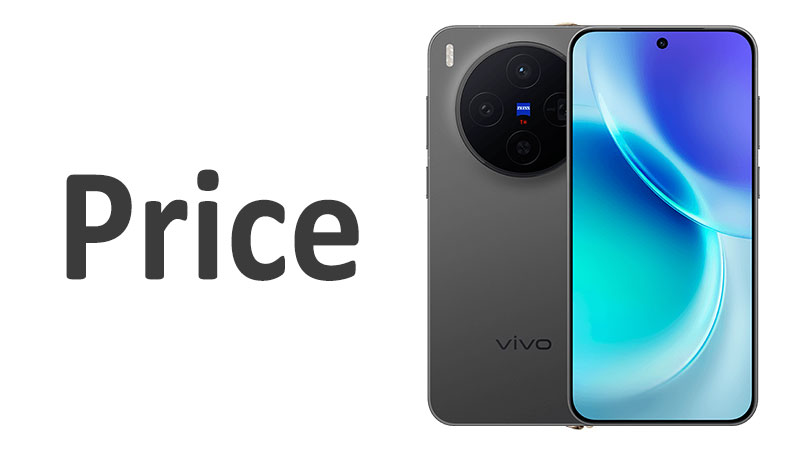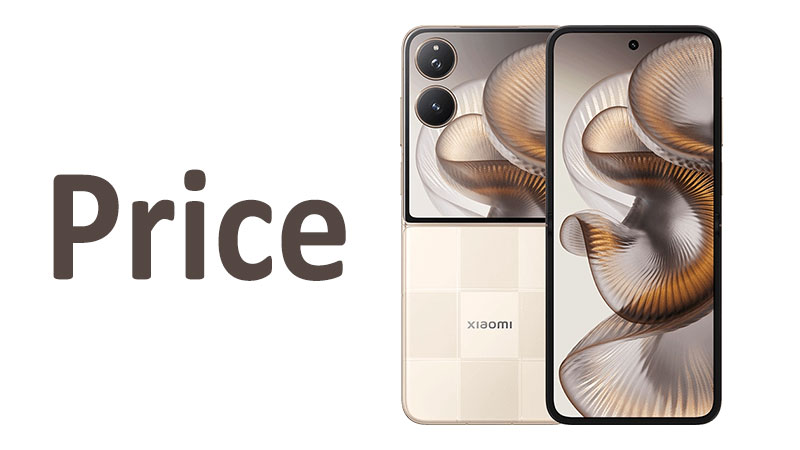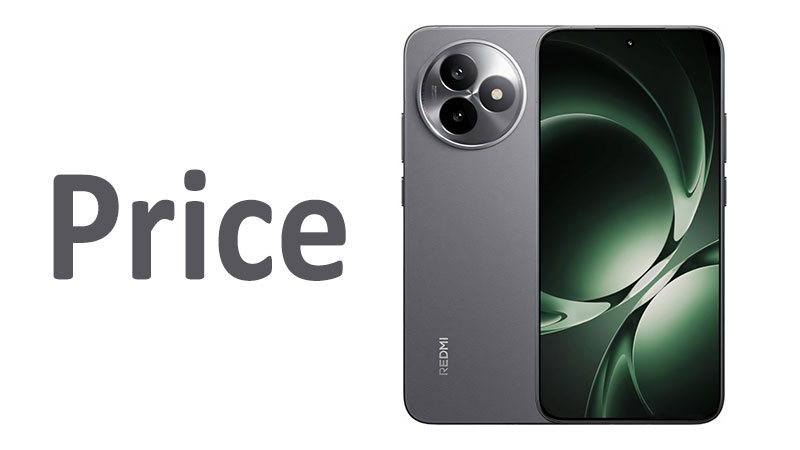The discussion surrounding the vivo X300 Price is highly relevant for consumers planning their next premium smartphone purchase. Understanding the initial cost of this base flagship device is essential for evaluating its overall market competitiveness. The vivo X300 represents a crucial balance point. It offers high-end performance and robust camera features without the extreme specialization of the Pro model. Therefore, its pricing must reflect this perfect blend of value and flagship technology. This detailed article explores the expected retail price. It also examines the key factors and market forces that directly determine the final cost of the vivo X300. Understanding this price strategy is vital before committing to a purchase.
Projected vivo X300 Price Structure by Region
Determining the precise final consumer price requires segmenting the global market. vivo employs a multi-tiered pricing strategy. This strategy includes distinct costs for the domestic Chinese market and the subsequent official global release. The base model X300 generally follows a more consistent global rollout pattern than the specialized Pro version.
Analyzing the Domestic China Price
The initial price in China establishes the essential cost foundation for all global markets. China is vivo’s home territory and receives the earliest commercial release. This domestic price reflects the core manufacturing cost plus the required profit margin. It excludes external costs like international import duties and most local taxes.
Based on historical pricing trends of the X-series, the starting price for the base X300 model is projected to be highly competitive. Analysts anticipate the price will begin around CNY 4,999. This entry-level model typically includes the minimum standard configuration, such as 12GB of RAM and 256GB of internal storage. This aggressive starting price is crucial. It is designed to maximize sales volume and directly compete with the standard flagship offerings from competitors like Honor and Xiaomi in the domestic market.
Forecasting the Global Retail Price
The official global retail price will inevitably be higher than the initial Chinese domestic price. This price increase accounts for several mandatory international business expenses. These expenses include accurate currency conversion rates, local value-added taxes (VAT), specific import duties, and global marketing expenditures. Critically, the global version must also cover the expense associated with certifying Google Mobile Services (GMS).
Experts estimate the global starting price will fall within a strong upper mid-range to premium category. The initial launch price for major international markets, including Europe and Asia, is expected to be approximately $800 USD to $900 USD. This pricing strategy positions the X300 directly against the non-Ultra or base flagship models from Samsung and other global brands. The price must successfully justify the inclusion of advanced features, particularly its powerful camera and latest-generation processor.
Storage and RAM Tier Pricing
The final amount a consumer pays is directly influenced by their choice of storage and RAM configuration. vivo, like most major manufacturers, utilizes tiered pricing. This structured approach effectively encourages consumers to upgrade to higher-capacity models.
For example, the standard X300 configurations will likely include three primary tiers. The 12GB RAM / 256GB storage variant represents the lowest price point. An upgrade to the popular 12GB RAM / 512GB storage model typically costs an additional $80 to $120 USD. The highest-end X300 configuration, often featuring 16GB RAM and 512GB storage, could command a total premium of $150 to $200 USD over the base price. This tiered structure successfully optimizes the average sales revenue per device sold.
Price Comparison: X300 Against Key Market Rivals
To determine the true value offered by the vivo X300 Price, a comparison with its predecessor and direct competitors is essential. This analysis reveals the strategic positioning of the device within the flagship segment.
Comparison with the Preceding X200
The previous generation vivo X200 set the financial baseline for the entire X-series. The X300 is expected to see only a very minimal, slight increase in price compared to its predecessor. This incremental price adjustment is standard for annual generational updates. It is primarily necessitated by the rising costs of raw materials and new, essential components.
The X300 introduces an updated, high-efficiency processor and likely a refined, brighter display. These hardware improvements necessitate a slightly higher final cost. Buyers should expect the starting price for the X300 to be approximately 3% to 7% higher than the initial launch price of the X200. This minimal increase ensures the X300 maintains a strong perception of value within the competitive market.
Comparison with Base Apple and Samsung Flagships
The vivo X300 targets the same core consumer base as the Apple iPhone (non-Pro) and the standard Samsung Galaxy S-series model. These competitor devices are priced aggressively within the $800 to $999 USD bracket.
vivo’s strategy is often to match this price range precisely. This ensures the X300 competes directly on performance and features. The X300 will likely offer superior technical specifications in areas like charging speed and camera zoom capabilities compared to its direct counterparts. The goal is to deliver a higher specification phone for an equivalent price. This positions the X300 as a high-value alternative to the more established, but potentially less-featured, global flagships.
Comparison with Chinese Flagship Competitors
The most intense price competition for the X300 comes from standard flagship models produced by Honor, Xiaomi, and OnePlus. These companies offer devices with similar processors and features, often launching at highly comparable price points in Asia.
vivo must ensure the X300 is competitively priced domestically to secure its market segment effectively. The key differentiator for the standard X300 is its refined design and consistent emphasis on camera quality, even without the Pro’s advanced Gimbal system. This balanced focus allows vivo to maintain a competitive price while successfully marketing the device as a superior imaging solution. The X300 avoids the ultra-premium pricing of the Pro, making it a stronger contender in the upper mainstream segment.
Factors Influencing the Final vivo X300 Price
The final retail price of the vivo X300 is carefully calculated. It is justified by the significant investment in advanced components and specialized proprietary technologies. Consumers should understand the reasons behind this premium pricing.
Core Camera Hardware Investment
While the X300 lacks the Pro model’s advanced Gimbal system, its camera hardware still represents a substantial portion of the overall cost. It integrates a high-quality main sensor and typically a capable telephoto or ultra-wide array. The partnership with ZEISS still contributes to the price. This collaboration provides specialized lens coatings and optimized image tuning software.
This superior camera hardware elevates the X300 above most standard flagships. The cost associated with integrating high-quality optics and maintaining the ZEISS branding is passed on to the consumer. This investment in imaging is the primary justification for the X300’s positioning above entry-level premium devices.
High-Efficiency Chipset Adoption
The X300 is expected to utilize the flagship or near-flagship mobile processor, such as a high-tier Dimensity chip. These new-generation chipsets are among the most costly individual components in the phone’s bill of materials. They deliver exceptional power efficiency and robust processing speed.
This investment is necessary to ensure the X300 delivers smooth, future-proof performance. The fast processing is crucial for handling demanding mobile games and all computational photography tasks. The premium price accurately reflects the cost of integrating this advanced, high-performance silicon.
Display and Industrial Design Quality
The X300 features a massive, visually stunning AMOLED display panel. This screen provides exceptional brightness, perfect blacks, and highly accurate color reproduction. The manufacturing process for these custom, high-end display components is inherently expensive.
Additionally, the X300 benefits from refined industrial design and premium build materials. This includes quality frame construction and advanced thermal management systems. The combination of a top-tier display and sophisticated construction contributes significantly to the perceived and actual premium value. This superior build quality helps to justify its price point.
Pros and Cons of the X300 Pricing Strategy
Evaluating the anticipated vivo X300 Price requires an impartial look at the advantages and disadvantages associated with its chosen price bracket. This perspective helps consumers finalize their decision.
Pros of the Strategic Price Point
The X300’s price point successfully positions it as the high-value option in the premium sector. It offers nearly all the performance of the Pro model at a significantly reduced cost. This strategic pricing attracts a much wider audience. It captures buyers who want flagship features but who are not willing to pay the extreme premium for the specialized Gimbal camera.
This pricing strategy generates substantial sales volume. The higher volume allows vivo to realize economies of scale in manufacturing, which benefits future models. Furthermore, the X300 acts as an excellent gateway. It introduces mainstream users to the high quality and advanced features of the X-series ecosystem.
Cons of Price Competition
The major disadvantage is the intense price competition within the $800 to $900 USD bracket. This segment is highly saturated with strong offerings from all major global competitors. The X300 must consistently offer compelling camera or charging speed advantages to stand out. Any perceived deficiency is quickly magnified by rivals.
The price also requires the phone to deliver a near-perfect user experience immediately at launch. While the price is lower than the Pro, it still represents a major investment for most consumers. Therefore, the device must meet stringent expectations for build quality and software stability. Any failures in these areas will lead to significant customer dissatisfaction at this price level.
Essential Price Navigation for Buyers
Global buyers must understand the key factors that can alter the final vivo X300 Price they pay. Navigating currency fluctuations and regional differences is essential for securing the best possible value.
The Impact of Currency Fluctuations
The official global price is strongly influenced by the exchange rate between the Chinese Yuan (CNY) and various local currencies, such as the Euro or Pound Sterling. Unfavorable currency shifts can immediately increase the final price in local markets, even if the base USD price remains constant.
Buyers should monitor economic conditions closely around the time of the official global launch. A stronger local currency helps to mitigate the price increase caused by import taxes. However, consumers must be prepared for the final retail cost to be subject to these unpredictable economic variables until the day of purchase.
Regional Tax and Duty Variances
Taxes and import duties vary widely across different countries and economic blocs. For instance, the price in European Union countries includes a high mandatory Value Added Tax (VAT), which significantly inflates the final retail price. In contrast, markets with lower sales taxes may enjoy a more favorable final cost.
These regional cost differences are unavoidable. They mean that the same device may cost hundreds of dollars more in one country than in another, solely due to government taxation policy. Global buyers should always focus on the official price specific to their country of residence for the most accurate figure.
Trade-In Programs and Subsidies
Major carriers and retailers often introduce trade-in programs and financing subsidies immediately following the global release. These programs effectively lower the final out-of-pocket cost for the consumer. Trading in an older flagship phone can offset a significant portion of the X300 Price.
Buyers should actively seek out these launch-day promotions. Subsidies from carriers, often tied to a two-year contract, can make the device significantly more accessible upfront. These programs are often the most effective method for reducing the initial financial burden of purchasing a new flagship phone.
Value Proposition: Target Audience Focus
The vivo X300 Price targets a specific consumer demographic: the high-end mainstream user. This is the individual who wants excellent flagship performance and a superior camera without needing the specialized, professional-grade features of the X300 Pro.
The X300 offers exceptional value in its camera performance. It delivers professional-looking photos and video stability that rivals much more expensive competitor models. The device provides a premium experience without demanding the highest possible financial investment. The powerful processor and sophisticated design ensure a seamless daily user experience.
However, the value proposition diminishes for two specific user groups. Firstly, for users who need the absolute highest performance for extreme gaming, the X300 Pro may offer a marginally better thermal solution. Secondly, for the budget-conscious consumer who only needs basic functionality, the X300 Price is still too high. The X300 is the ideal choice for the user seeking the best blend of camera quality, speed, and overall cost-effectiveness in the premium segment.
Conclusion: Making a Balanced Decision
The expected vivo X300 Price firmly positions the device as an exceptionally strong competitor in the upper tier of the global smartphone market. The anticipated cost, generally falling between $800 and $900 USD, offers compelling value. This price point is successfully justified by the integration of a top-tier processor and a highly capable camera system.
Buyers should view the X300 as a strategic, cost-effective alternative to the ultra-premium flagships. It provides nearly all the speed and core features of the most expensive phones while avoiding the financial investment required for specialist hardware like the Gimbal system. Global consumers should prioritize the official international version for full warranty and software support. The X300 represents an intelligent purchase. It delivers true flagship capability and photographic excellence at a justifiable and strategically balanced price point.
Frequently Asked Questions (FAQ)
1. How does the X300 Price compare to the X300 Pro Price?
The base X300 is expected to be approximately $150 to $200 USD less expensive than the specialized X300 Pro model.
2. What is the biggest factor causing the global price increase?
Local Value Added Taxes (VAT) and import duties are the largest contributors to the difference between the China price and the global retail price.
3. Will the X300 Price include Google services in the global version?
Yes, the official global retail version will include all certified Google Mobile Services (GMS) fully installed.
4. Is the X300 available in a lower storage configuration to reduce the price?
The standard base model typically offers 12GB of RAM and 256GB of storage, which is the lowest price tier available.
5. When is the best time to purchase the X300 for potential discounts?
The first significant official price reductions are usually expected around the middle of the following year, approximately six months after the global launch.



